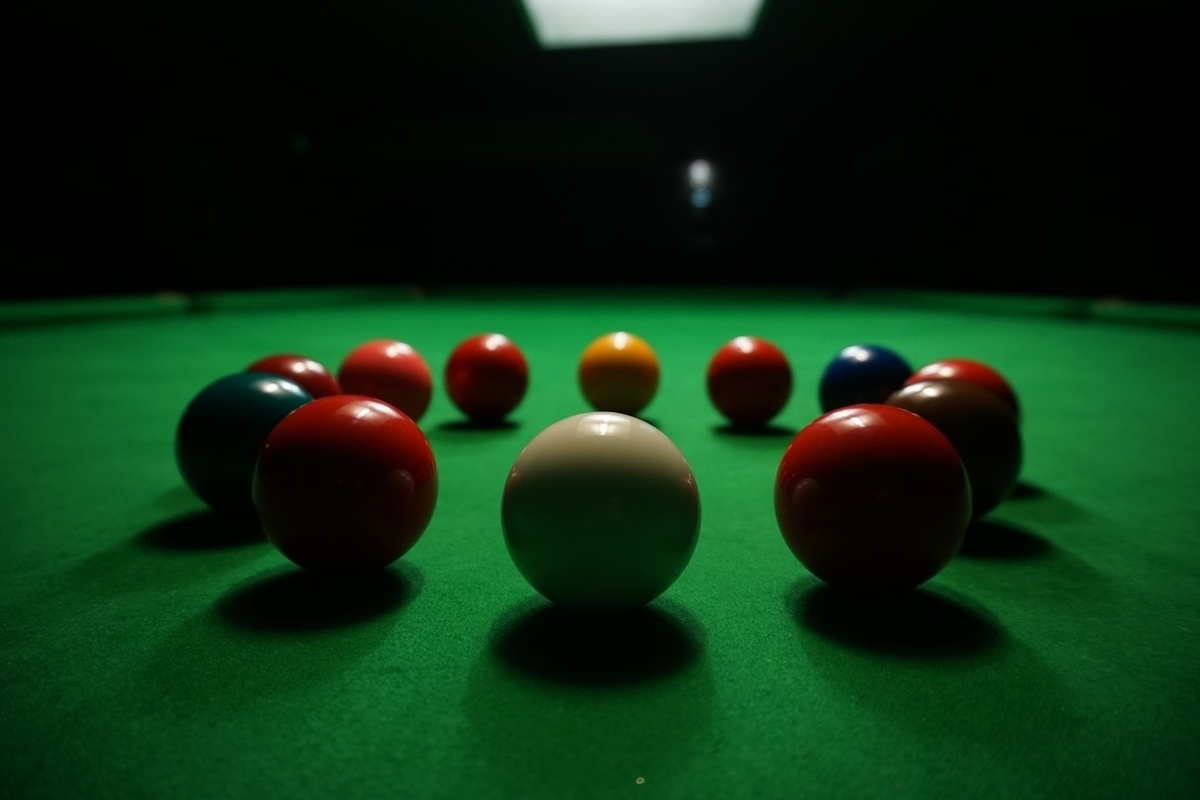Snooker is a cue sport that emerged in the late 19th century as a variation of the game of blackpool and billiards. While the basic premise of snooker involves potting balls into pockets, the game has many nuances and specific rules that govern gameplay. In this article, we will explore the key elements that make up the framework of snooker rules.
Equipment and Table Specifications
Snooker is played on a rectangular 12×6 feet table with six pockets, unlike the smaller pool tables. The snooker table has cushions on all four sides that allow balls to rebound off them. Snooker balls include 15 red balls worth 1 point each and six colored balls – yellow (2 points), green (3), brown (4), blue (5), pink (6) and black (7). The balls are 2 1/16 inches in diameter. A white cue ball is used to strike the object balls. Specific equipment like rests and extended cue sticks may be used to make difficult shots.
The snooker table is covered in tightly-woven green baize that allows the balls to glide smoothly across the surface. TheCreateHistory provides key details on the evolution of snooker table specifications over the years. The pockets have a rounded shape with gravity-operated ball return mechanisms. Understanding the snooker table layout and dimensions is crucial for navigating shots.
| Ball Color | Points Value |
|---|---|
| Red | 1 |
| Yellow | 2 |
| Green | 3 |
| Brown | 4 |
| Blue | 5 |
| Pink | 6 |
| Black | 7 |
Objective of the Game
The object of snooker is to score more points than your opponent by potting object balls in the correct sequence. Each frame starts with the balls placed in a triangular rack. Players then take alternate turns, striking the cue ball to pot reds and colors. Points are scored by pocketing a red ball, followed by a colored ball in ascending order. After all reds are potted, colors must be cleared in sequence. The maximum break possible is 147 – potting all 15 reds with 15 blacks.
The player with the highest score at the end of a frame wins it. Matches are played over a predetermined number of frames. Tactical safety shots and snookers (obstructing an opponent’s cue ball) are an integral part of the game. Understanding how points are tallyed is key to strategizing and winning frames.
Opening Break Off
At the start of a frame, the balls are racked and the referee tosses a coin to decide which player breaks off. The winner of the toss has cue ball-in-hand within the ‘D’ at the head of the table. They must then play a legal break shot that drives at least one red ball over the baulk line at the opposite end.
It is illegal to pot a red from the break. If the break is foul or no reds cross the baulk line, the opponent may request a re-rack or play from where the cue ball lies. The break off sets the tone for the frame, so players put a lot of thought into getting it right.
Fouls and Penalties
Like any cue sport, snooker has strict fouls that are considered illegal shots or misconduct. Examples include potting the cue ball, hitting balls other than the cue ball, using equipment improperly and more. When a foul occurs, the opponent player typically gets ‘ball in hand’ – the chance to place the cue ball anywhere on the table to gain an advantage.
Other penalties for fouls include loss of points, opponent awarded points, opponent re-spotting colors if potted and so on. Serious breaches of etiquette rules may lead to frame forfeiture. Knowing how to recognize fouls, declare them properly and determine the correct penalty is integral for fair play.
To conclude, the rules of snooker form an intricate tapestry governing shot selections, scoring, fouls and etiquette. Mastering the nuances takes time, patience and an eye for detail. With a table spanning 12 feet and 22 balls in play, the permutations and combinations are endless. But the logical sequence of reds and colors brings structure to the game. Safety shots, tactical nudges and snookers demonstrate the psychological dimension as well. For both casual and competitive play, a strong grasp of snooker’s many rules is essential.

